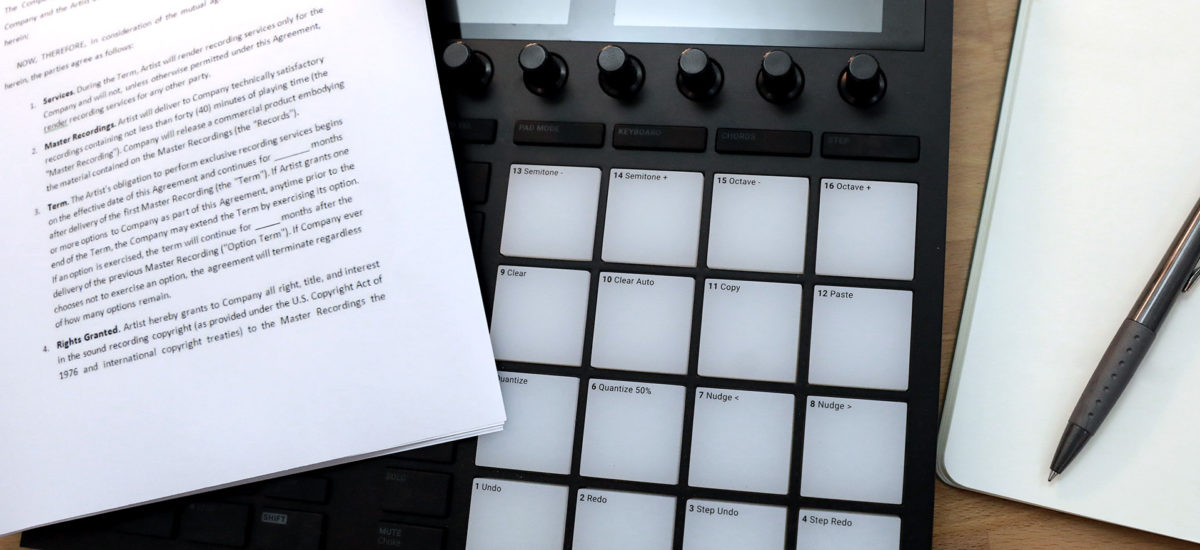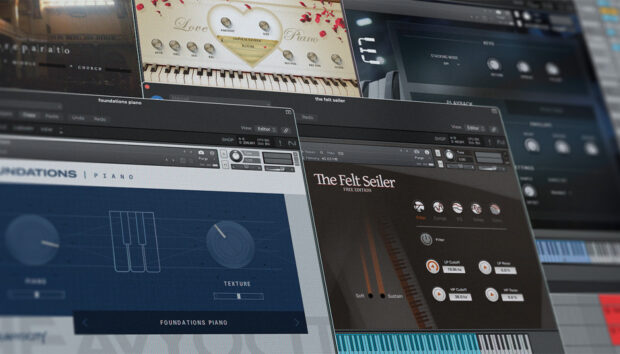
Starting a label in the digital age is now easier than ever. Self-distribution services will help sell your music, label artwork can be made at home, and mastering services are cheaper, faster, and easier than before. But even with these tools, simply launching a label hardly ensures its success, and convenience rarely comes without risk. To help guide you, we spoke to those who’ve already been there to get an insider’s look at how to start your own label. Read on, and soon you’ll be DJing your own releases with TRAKTOR in no time.
It might seem obvious, but the first major step in starting a label is understanding why you’re doing it. If it’s money, then it’s important to note that success happens rarely, and there are many financial risks to overcome. But if you’re trying to create a platform for a crew of select, talented musicians, like international trap and dubstep imprint six impala, then the following advice might come in useful. “Creating a strong brand identity is the hardest part of starting a label”, six impala label manager Daniel MacPhee says, but it’s vital for a creating a solid foundation early on.
UK-based DJ, producer, podcaster, and promoter Ben Gomori saw his opening after dealing with long-standing imprints who he says weren’t doing a good enough job on promotion, royalty reports, and other label essentials. “I felt like I could do a better job myself,” he says about Monologues Records, an independent label that specializes in deep house. Knowing your label’s core mission will help guide you once the road gets rocky later on.
Next you’ll need a name. Try and pick something that will be easy to find on Google. And remember, “the label name sends out a message about your brand,” says Nightwave, the Glasgow-based DJ and producer behind Heka Trax. “It’s a marketing tool and point of reference for the artists and the audience—the name becomes a synonym with how the music is curated.” So choose wisely. With your new name and ethos, it’s time to make some artwork. If you have the skills, programs like (the free, and open-source) Gimp or Photoshop, will get the job done. There are also apps like TAD (Thumbnail Art Design) that can help you out.
Shoddy artwork will reflect on your label, and it’s the first thing customers see. “Take your time when developing the art for your label, don’t copy other platforms or follow trends—create a unique style and focus on refining it,” MacPhee says. He works with a visual artist, and says the label’s “visual aesthetic has been an important part of separating us from our peers.” This is essential to promote a label.
Having a visually (and hopefully sonically) standout label should be everyone’s starting point. The next part is getting your music in front of enough people to make it work. As a someone with over a decade of experience in the industry, Gomori has long-standing contacts and a fanbase, which he said made promo easier for him. If however you’re starting from scratch, it might be wise to shift your priorities. Most of the releases on six impala, which was launched in January 2018, are free to download “to maximize reach instead of prioritizing sales as a revenue stream,” MacPhee says. “The market wants music to be free and accessible, so our strategy to break into said market is to fill that need.”
Traditionally, getting into the marketplace—selling your music—happens through a distributor. Gomori used his contacts to find someone by recommendation, and says a good distributor is indispensable in getting music featured in high-profile charts on retail sites like Beatport and Traxsource, i.e. “places where your music’s gonna sell and make money,” he says. Though the distributor will take a cut of the sales and streams, “they’ll also collate all the information from these websites about how many times tracks are getting used and how much that’s paying you, collect all the money, and pay you in usually one quarterly sum,” he continues. Gomori warns, however, that without doing some of your own promotion, like making sure your label’s releases are getting artist feedback, the distributor will have a much harder time pushing your music.
That doesn’t mean professional distribution is the only route. “The streaming industry is exploding, and using DIY avenues like Bandcamp has become much more common, so don’t let the lack of a distributor discourage you,” Nightwave says. six impala uses a self-distribution service called Stem, which MacPhee says has “a streamlined uploading process and easy-to-use contract system that makes setting up splits and organizing a release fast and efficient.” There are other services available, including Distrokid or TuneCore so make sure you do your homework before making a decision. Anyone can sell on Bandcamp, and it’s probably the internet’s most equitable platform, and is a great option for DIY labels. But it’s not the only one, so it pays be creative about your possible revenue sources.
“Running a Patreon has been a really strong decision for us, especially as a smaller music outlet,” MacPhee says. “We don’t have the same promotional reach other platforms do to make revenue from music sales a viable option, so a subscription-based model was adopted to compensate for this.” six impala fans can connect directly with the label through Patreon—a subscription content service—then donate a tiered monthly fee in return for rewards like early access to the label’s releases. “This support allows us to put money back into the platform and maximize growth,” MacPhee says.
Spotify is also an option. Though be aware that music needs “a few hundred thousand plays to accrue anything significant,” Gomori says. “But there is lots of money being made, no doubt.”
Once money is involved, inevitably, so are contracts. If you’re an artist, you’ve likely already dealt with those when signing releases. It’s a headache, but learning the legal ins-and-outs is important, and “just takes time and dedication,” Nightwave says. “Read any contracts you can, join the Musicians Union, look up all you can online, or get a music lawyer to look up your paperwork.” Not getting a good grasp early on might come back to bite you.
“I wish I started off with a better grasp on the legalities of operating a company. Things like contracts, trademarks, copyright, taxes and business registration were the hardest things for me to figure out at first,” MacPhee says.
Once royalties are paid, what you do with your money next matters. And while living large sounds fun, it’s not how smart business owners creates success—at least at first. “If you’re starting a platform from the ground up without any type of funding, any revenue you get towards the platform needs to be put back into funding the company’s growth,” MacPhee says. This means paying for promotion, better artwork, distribution services, and crucially, mastering.
“It’s something you need to spend money on,” Gomori says about mastering. “There’s been a rise in self-mastering services, and it’s nonsense. Just find a good mastering engineer.” Professional mastering studios, which can be found online, only usually charge between £20 and £40 per track, Gomori says. “Yeah it adds up, but it’s the most important bit to be sure what you’re putting out there sounds as good as possible.”
This is especially true if you’re interested in vinyl, which can be a unique way to showcase a small, special-release run. “I usually commission mastering engineers,” Nightwave says, “and if it’s a vinyl release, I would most definitely go with people with plenty of relevant experience.” Though vinyl comes with its own set of headaches. “I still love vinyl, but releasing digital is much less hassle and much, much cheaper,” she continues. She touts the resurgence of cassette labels, like Good Morning and Lazy Tapes, saying “every purchase massively helps the label and the artists, and we need to keep creatively evolving these product avenues, even if it’s just merch. I’m starting a new label this year and researching these avenues at the moment.”
MacPhee echos her statements, saying, “don’t fall in love with any one way of doing things. The only constant in any industry is change.”
Whichever way you decide to do things, what matters more than anything is how much you’re willing to give. “It’s a lot of work, time, money and love,” Nightwave says. Though she cautions against expecting too much too quickly, especially if you’re running your imprint solo with more on the side. “You may need to take some time off to juggle the label and being an artist—it’s OK!”















